How To Do Australian Pull Ups, Muscles Worked, And Alternative Exercises
We all know that the pull-up is one of the best back-building exercises. But what about if we turn it upside down? Today we are looking at Australian pull ups, where we’ll be going down under the bar instead!
Pull-ups are a challenging upper-body exercise that require strength, stability, and coordination. When performed correctly, they are an excellent way to build strength and conditioning throughout your body.
Performing pull-ups requires a good amount of upper-body strength. If you’re not quite ready for them yet but want an exercise to improve your upper-body strength, look no further than Australian pull ups.
GRAVITY FITNESS PULL UP BAR
Portable, versatile, home fitness
- Highly versatile- suitable for a full range of exercises including pull ups, dips, leg raises, incline press ups and front and back levers
- Extended height: 192cm
- Compact position height: 120cm
- 3-year warranty against manufacturer defects
- Carry bag included
ONLY £139.95 £109.95
What Are Australian Pull Ups?
Also known as inverted rows, Australian pull ups offer a different way to target your back, arms, and core muscles. They work many of the same muscle groups as a traditional pull-up, making them a great way to develop pulling strength before progressing.
Now, I know what most of you are thinking; why are they called Australian pull ups? Well, when performing them, you go ‘down under’ the bar which is where the Australian association comes in. You can call them either name, but we think the Australian one is cooler.
Think of them like an upside-down push-up that works exactly the opposite muscle groups. They offer a great way to prepare for normal pull-ups, with only a solid barbell levered high above the ground for you to fit underneath.
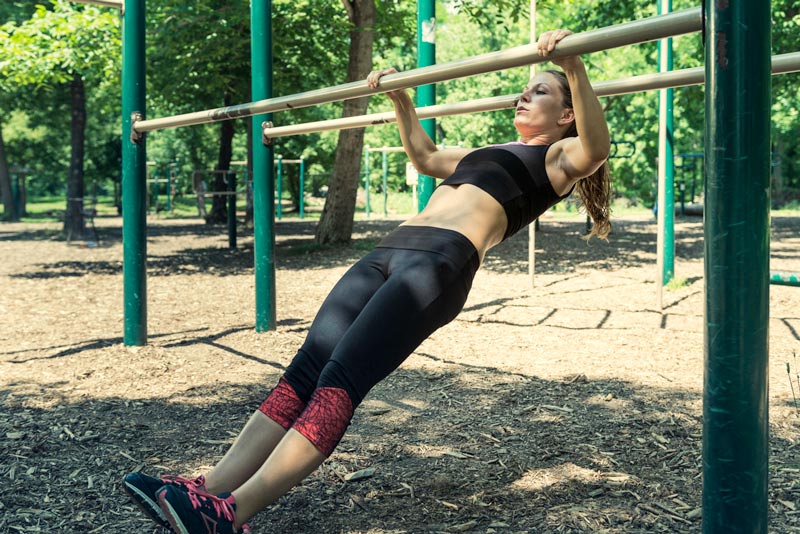
How To Do Australian Pull Ups
How to perform a proper Australian pull-up:
- Using a power rack or Smith machine, set a barbell at around hip height. Ensure that your bum doesn’t touch the floor when your arms are fully extended with your body horizontal to the floor.
- Lay underneath the bar, making sure it’s in line with your chest. Grip the bar with your hands slightly wider than shoulder-width.
- Extend your legs in front of you, keeping your bum off the floor. Engage your core and take a deep breath in. Create a straight line from your head to your toes parallel to the floor.
- Squeeze your shoulder blades together and pull your chest up to the bar. Hold the top position briefly.
- As you lower back to the starting position under control, breathe out and prepare for the next rep.
If you’re finding these difficult, add a resistance band to make them easier whilst you develop the proper strength and technique.
GRAVITY FITNESS PULL UP BAR
Portable, versatile, home fitness
- Highly versatile- suitable for a full range of exercises including pull ups, dips, leg raises, incline press ups and front and back levers
- Extended height: 192cm
- Compact position height: 120cm
- 3-year warranty against manufacturer defects
- Carry bag included
ONLY £139.95 £109.95
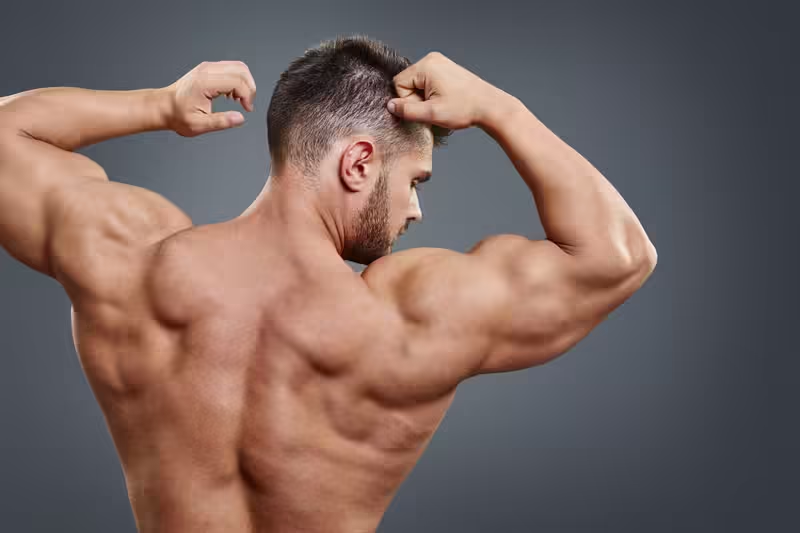
Australian Pull Ups Muscles Worked
When performed correctly, the Australian pull-up is a highly effective upper-body exercise. Depending on your goals, you can add weight to give these primary muscle groups an even bigger stimulus.
These are the main muscles worked:
- Latissimus Dorsi (Lats).
- Upper Back.
- Biceps.
- Forearms.
- Core.
Latissimus Dorsi
As the biggest and strongest back muscles on your body, your lats are involved in most pulling movements. They span from your hip bones to your humerus and also contribute to stability and trunk motions.
Your lats are one of the primary muscle groups used when performing Australian pull ups.
Upper Back
Your upper back muscles consist of your posterior deltoids, trapezius, and rhomboids. They are all involved in scapular (shoulder blade) movement and overall health.
When performing Australian pull ups, these muscles help to stabilise and move your scapulae when pulling up to the bar.
Biceps
Your biceps, more commonly known as the ‘t-shirt’ muscles, span from your forearm to your scapula. They consist of the short head, long head, and brachialis which is a small muscle near your forearm.
Your biceps assist your lats and upper back when performing the Australian pull-up. When using a pronated grip (palms facing down), inverted rows primarily target your brachialis.
Forearms
Your forearms consist of several muscle groups that run from the bottom of your biceps to your wrist. During pulling movements, your grip transfers the force from the weight to your target muscles
During the Australian pull-up, your forearms help you keep a firm grip on the bar whilst you row upward. Your forearm flexors and brachioradialis also assist in upper arm flexion.
Core
Your core consists of your trunk muscles. These include your transverse abdominis, rectus abdominis, and obliques.
The Australian pull-up requires you to maintain a straight body position, with your head, chest, and hips in line when you row toward the bar. Your core muscles contract isometrically to maintain a tight body position.
Australian Pull Up Benefits
Just because the Australian pull-up is easier than a normal pull-up doesn’t make it any less effective. For anyone calling it the ‘weak man’s pull-up’, don’t listen!
Here are some of the awesome benefits:
Builds Upper-body Muscle And Strength
Australian pull ups work your lats, rhomboids, trapezius, posterior deltoids, biceps, and forearms. If you’re looking for a compound upper body movement to develop upper body muscle and strength to fix weak links in your pull-up, these tick all the boxes.
Furthermore, a strong back helps with posture, stability, and injury prevention. The benefits of Australian rows extend to other aspects of daily life.
Helps To Develop A Strong Grip
In order to have a strong grip, you need strong forearms and biceps. The inverted row is great at developing these muscles with a small initial learning curve.
Easy to Scale and Progress
Whether you’re a complete beginner or an advanced athletes, the Australian pull-up can be scaled accordingly. To make them easier add a resistance band or add weight to your torso to provide an extra challenge.
Australian pull ups are a great way to progress to more difficult exercises such as the traditional pull-up and barbell row. They provide a great way to work your upper body whilst reducing the load on your lumbar spine. All you need is a barbell and your body weight.
Australian Pull Up Alternatives
While the Australian pull-up truly is a great exercise, there’s nothing wrong with switching things up from time to time. Let’s take a look at some good alternatives.
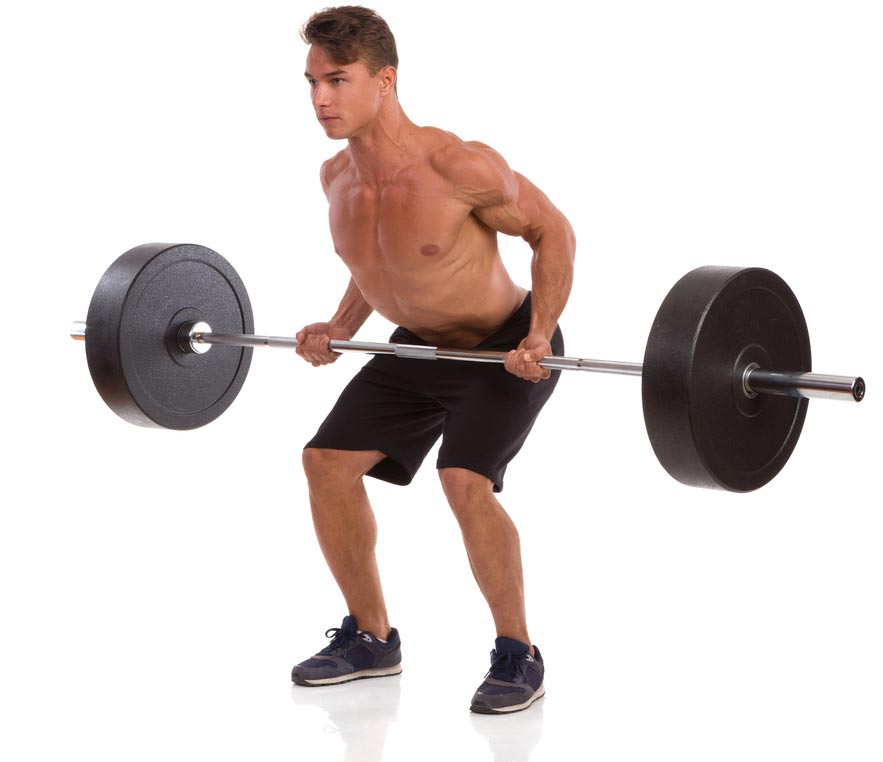
Bent-over Rows
This is probably the exercise that most of us are familiar with. Bent-over rows are a staple exercise among powerlifters and bodybuilding. They look quite different to the Australian pull-up but work similar muscle groups. Instead of pulling your body toward the bar, you hinge at the hips and bring the weight toward you.
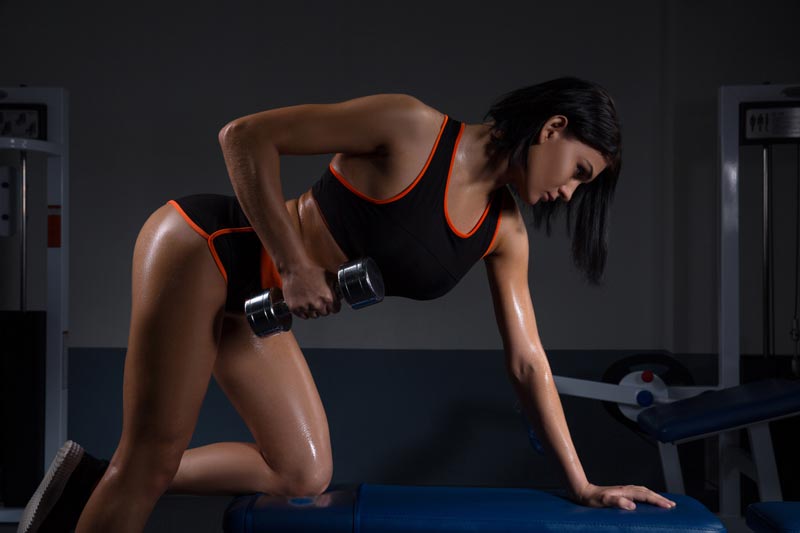
Seal Rows
These are kind of like Australian pull ups but instead, you use dumbbells and a bench. Lie down on a flat bench and row the dumbbells toward you whilst keeping your chest against the pad.
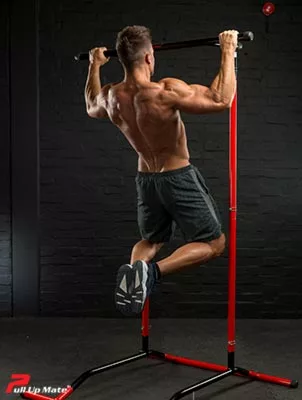
Pull-ups
After mastering Australian pull ups, the normal pull-up is likely the next step. They work similar muscle groups but involve pulling your entire body weight up which is what makes them harder.
Closing Comments
The Australian pull-up, also known as the inverted row, is one of the most versatile exercises you can add to your workout routine.
It’s beginner-friendly, easy to progress, and requires little equipment. If you’re looking for a stepping stone before progressing to pull-ups or simply want to develop some better pulling strength, the Australian pull-up is the exercise you need.
References
- https://journals.lww.com/nsca-scj/fulltext/2014/08000/the_inverted_row.13.aspx
- https://pubmed.ncbi.nlm.nih.gov/19197209/



